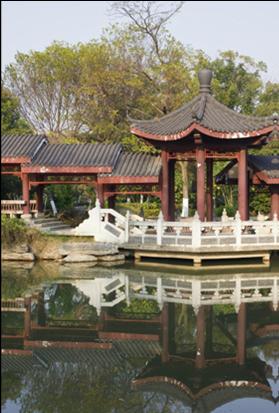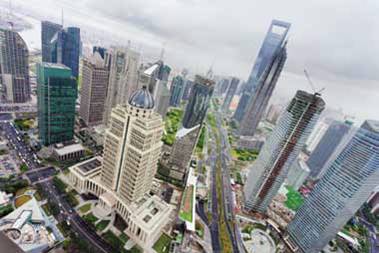 About Shanghai
About Shanghai
The City at a Glance
Shanghai is located in central-eastern China, confronting the East China Sea. Roughly, Shanghai is sectioned into two parts: Pudong (to the east of the Huangpu River) and Puxi (to the west of the Huangpu River). For tourists, most of the historical and scenic sites in Shanghai are in Puxi while Pudong is the new development area. Shanghai literally means "the City by the Sea". It has such important sites as the Bund, Temple of Jade Budha, Yu Garden, Old City Bazaar, Shanghai Museum, Children's Palace, Xintiandi, Former Residence of Dr. Sun Yat Sen, Oriental TV Tower, Shanghai Nanjing Road, and Huangpu River cruising.
Shanghai was once the number one metropolis in the Far East and after several decades of slumber the city has risen with rapid economic development through its reform and has opened itself to the outside world. It has and continues to display its inexhaustible vitality and brilliant achievements to the world with a new image and infinite charm. Take a walk by night under the dazzling lights or enjoy a peaceful morning walk by the Huangpu River among the magnificent high-rise buildings or amidst graceful and cozy street landscapes and you will feel the cosmopolitan atmosphere of a great international metropolis.
Time Difference
Time used in Shanghai and all over China is called Beijing Standard Time. It is 8 hours ahead of Greenwich Mean Time (GMT +8).
Climate
Shanghai has a humid, subtropical climate, and rain is common throughout September. Average temperature ranges between 23 and 30 degrees Celsius, and humidity levels can be very high. Participants are recommended to pack light with preparation for rainy weather.
Currency and ATMs
Chinese Yuan (also known as Renminbi, RMB for short) is the official currency. Use of foreign currencies is generally not allowed. There are currency exchange services at Shanghai Pudong International Airport as well as at major hotels and banks in China. In larger cities like Shanghai, many ATMs will accept foreign bank cards in major shopping centers and international hotels. These ATMs will have signage that states only foreign cards can be used. Some Chinese bank branded ATMs will also accept foreign cards. The ATMs will display signage illustrating what cards are accepted and will remit RMB (Chinese currency) notes.
Language
Mandarin is the standard spoken language in China. Locals also speak the Shanghai dialect, Shanghainese, which sounds very different from Mandarin, although you probably will not notice for a while! English is not yet widely understood by locals. It is recommended to speak with a person younger in age if you need help as they will often speak and understand more of the English language. It is also recommended to take a copy of the address written down on paper so you can show taxi drivers or ask anyone that can help you find your way.
Cuisine
As an international city, Shanghai offers all kinds of cuisines from around the world. Of course, the majority of restaurants offer Chinese food at reasonable prices. Chinese food is famous for having eight major cuisines: Sichuan, Zhejiang, Hunan, Jiangsu, Shandong, Fujian, Cantonese, and Anhui. Shanghai cuisine, also known as Ben Bang, is not one of the eight major cuisines. Give it a try, as you may enjoy it. There are certainly many options available to choose from and enjoy! Try to master chopsticks as most Chinese restaurants do not provide forks and knives. Please note that the vast majority of restaurants and public places freely allow smoking and do not have non-smoking sections.
Visa Requirements
It is the responsibility of all delegates and accompanying persons who require a visa to China to ensure that the proper paperwork has been finalized. The requirements for application for a visa to China may be strict and comprehensive. Because the requirements vary in each country, we strongly advise participants who require a visa to enter and exit China to contact their local Chinese embassy and/or travel agent to obtain information on the requirements.



